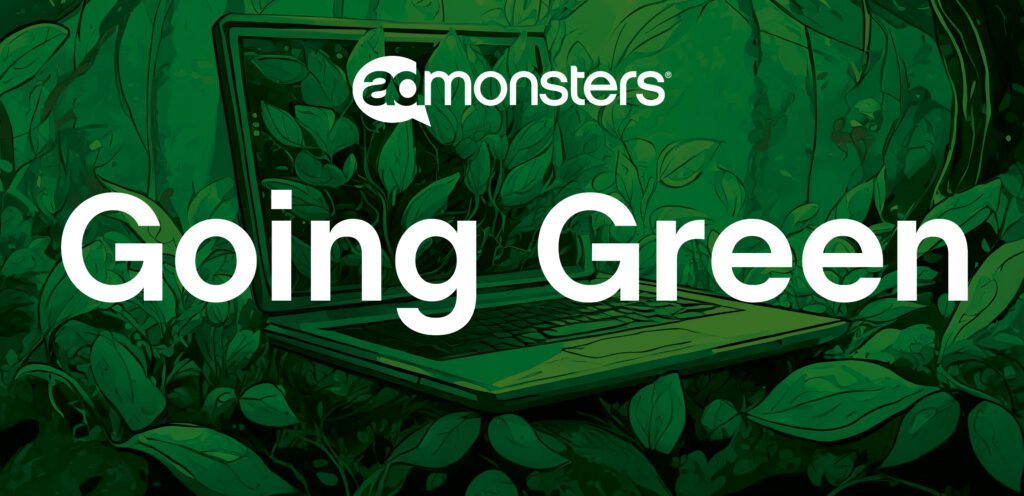
Discover how John Osborn, Director of Ad Net Zero USA, aims to align the advertising industry with sustainability practices. This AdMonsters Q&A explores his dual passion for advertising and environmental responsibility, emphasizing actionable steps towards achieving net zero emissions in ad tech.
When John Osborn hears a calling, he responds. At the start of his career, his calling was advertising, and he passionately embraced it. He joined Saatchi & Saatchi in the late 1980s and has served the industry ever since, working his way up to leadership positions, including CEO of OMD USA and CEO of BBDO NY before that. In 2022, he heard another calling: sustainability.
While he still loves advertising, he recognizes that it significantly contributes to climate change. With twin desires of helping the sector clean up its act and leaving the world a better place for his kids, in 2022 Osborn joined Ad Net Zero as the USA Director. It’s a role that allows him to answer both of his callings. He spoke with AdMonsters about his work at Ad Net Zero, and his goal to help all companies within the advertising sector, including the digital ad tech ecosystem, to embark on a path towards net zero.
AdMonsters: You say you joined Ad Net Zero because you felt a calling. Can you explain?
JO: Sure. In many ways, it was a business decision. Clients were beginning to ask about sustainability and for less carbon-intensive campaigns. Sustainability is clearly on our supporters’ minds. At the same time, my kids are also concerned about the state of the planet, and that weighed on my mind as well.
Ultimately, I love advertising, and I think we have a unique opportunity with sustainability. More than almost any other industry, we have a line of sight into our supply chains and our Scope 1, 2 and 3 emissions. That means we have a really good shot at actually measuring and reducing carbon from our operations. We know who our partners are, how content is created and distributed.
What’s more, advertising has been a resourceful industry. We have shown that we can come together to make the impossible happen in order to solve really thorny, hairy problems. So I saw the opportunity to help bring about meaningful change.
AdMonsters: Ad Net Zero officially launched in the US in 2023, how many companies have joined since then?
JO: We have about 100 supporters in the US right now. Joining isn’t a matter of only paying a (modest) fee to cover our expenses as we push forward with tools and frameworks. One of our requirements is that supporters have one year to communicate to the market a science-based goal for carbon reduction. We believe, from an integrity perspective, this is an important element of the program.
When we talk about sustainability, we often focus on the success cases, but I’m a big proponent of creating safe spaces so that we can talk about the less successful stories because we need to learn from them.
AdMonsters: Is this a scary exercise for some companies? Are people worried their Scope 1, 2 and 3 emissions inventory will reveal bad things about their operations?
JO: I think that companies should be encouraged to get on the journey, regardless of where they start, because to me, the headline isn’t where they start, it’s the improvements that they make.
When we talk about sustainability, we often focus on the success cases, but I’m a big proponent of creating safe spaces so that we can talk about the less successful stories because we need to learn from them. The fastest way to get to net zero is to learn from what worked and what didn’t, without sharing competitive secrets, of course. A lot of companies are working together to come up with solutions that will benefit the entire industry.
AdMonsters: What advice do you give to companies that are contemplating a sustainability initiative?
JO: My first recommendation is to read up on the topic. There are a lot of really great resources that have been released over the past year or so. Released last summer, there’s the GARM Sustainability Quick Action Guide, IAB Tech Lab’s Sustainability task force Playbook for Achieving a Sustainable Programmatic Marketplace — both focusing on tangible actions that can be taken now.
The ANA released its transparency study, and Google’s Sustainable Marketing Playbook which is also very helpful for companies just beginning to embark on this journey, including thinking about the impact of advertising’s creative and messaging.
One of the first steps is to measure a company’s emissions, and there are a lot of resources out there. For instance, Ad Net Zero works with Green the Bid USA, which provides a framework, resources, and best practices for advertising production work, helping agencies, brands, and production companies adopt more sustainable methods.
And we’ve worked with AdGreen to incorporate its carbon calculator within our dashboard, which helps companies actually calculate how much carbon they generate. We just released a report of the 2,700 jobs that have been put through this calculator, so we have solid benchmarks for the industry, in terms of production size and tons of carbon released.
So there are a lot of really great resources that people in the industry can access to begin their journey.
AdMonsters: Who should take responsibility within a company? Do they need a Chief Sustainability Officer?
JO: Depends on the company. Minimally, they should identify a Green Team of passionate employees within their organization. These employees may want to, on a simple level, organize a clean-up crew, or more strategically lead sustainability programs within the office, such as seeing if the office can purchase renewables from its energy provider, instituting a recycling program, and examining its travel program.
AdMonsters: Do you recommend eliminating employee travel?
JO: We’re in the business of helping marketers make smarter decisions, period, hard stop. It’s not “don’t ever travel.” Rather, the question is how can companies and people be more thoughtful and make smarter decisions about travel. A simple decision about travel is actually an important decision when it comes to carbon emissions. It all counts.
AdMonsters: What is the impetus behind that criteria, besides goodwill and concern for the environment?
JO: There’s a currency developing around carbon emissions. Why? Because regulation is heating up. For instance, the SEC releases rules for standardized climate disclosures for companies, and while currently held up in litigation, California’s similar law will have far-reaching impacts beyond just the state. Investors need a standard way to assess emissions risk for their investments, and there is growing regulation around claims to consumers as well.
We serve the greater good of the companies that are doing the advertising. Job one for Ad Net Zero is to create the frameworks and the consistent standards on behalf of the industry, so we don’t have a wild west of reporting.
AdMonsters: Let’s say a group of people within a company decide to start a green team. How do they get the buy-in from upper management?
JO: That’s a great question. I’d say that it’s the same as any other business question, which is to make sure the solutions proposed are rooted in business. Purpose and profit don’t need to be at odds with one another. I think one of the reasons why more companies are leaning into sustainability is that it’s more profitable. They’re also finding that it creates more efficient business models around that. If they can unlock the value, they’ll find support for sustainability within the organization.
AdMonsters: The industry has always prided itself on creating ever-better ad units that capture a consumer’s attention. Can advertising be dazzling and carbon-free simultaneously?
JO: Yes. The industry is innovative. Look at the pandemic. Advertising shut down on a dime, but then within two weeks, it reemerged, with big advertisers releasing fresh content. It didn’t take long for advertising to kick into gear using different tools and different behavior. This is just one example of the ability to pivot. Can we create ad units that use data and processing efficiently but engage audiences? Absolutely. Can we clean up the ad ecosystem and also drive growth? Heck, yes.
AdMonsters: What would you like to see the industry focus on over the next 12 months?
JO: I want companies to measure, manage, and mitigate their carbon emissions. That’s what I would love: three M’s.
There are things they can do immediately. For instance, take a look at your travel policy. Who’s traveling, and for what purpose? Are people traveling halfway across the country to attend a one hour meeting? Taking a hard look at travel will lower admissions, and frankly, will probably make life easier on employees who are often asked to travel too much (something I know from experience).
__
John Osborn was appointed as the Director for Ad Net Zero (ANZ) in the United States in late 2022. Originally launched in the UK, ANZ has grown to over 100 supporting companies, and now counts over 65 supporters in the US market, which officially began operations in early February 2023. Under John’s leadership, ANZ’s mission is to leverage the power of its supporters, alongside the ANA, 4As and IAB, to educate, set benchmarks & frameworks, measure and lower the carbon emissions associated across all advertising-related operations. Prior to ANZ, John was CEO of OMD in the US over five years from 2017 until late 2022. John’s experience also includes 25 years of service at BBDO NY, where he served as President & CEO for 13 consecutive years prior to moving to OMD. John has a wealth of non-profit board experience including the Red Cross of Greater New York, Global Dignity, Police Athletic League, AdCouncil, AAF and more.
